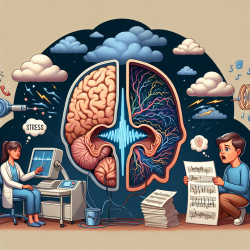Understanding Theory of Mind in Schizophrenia: Implications for Practitioners
The ability to attribute mental states to oneself and others, known as Theory of Mind (ToM), is a crucial component of social cognition. This ability allows individuals to understand and predict others' behaviors, an essential skill that can be significantly impaired in individuals with schizophrenia. Recent research by Scherzer et al. (2015) highlights the complexity of ToM, suggesting it comprises multiple components. This blog delves into the study's findings and explores how practitioners can leverage these insights to improve therapy outcomes.
Key Findings from the Study
The study examined the relationship between executive functions (EF) and ToM in individuals with paranoid schizophrenia (pScz) compared to a non-clinical group. The researchers discovered that different ToM tests were not equally sensitive to the pathology, indicating the presence of multiple ToM components. The study also found that each ToM test had its own best EF predictor, supporting the hypothesis of multiple ToM components.
Implications for Practitioners
Understanding the multi-component nature of ToM can significantly impact how practitioners approach therapy for individuals with schizophrenia. Here are some practical implications:
- Customized Assessment: Use a battery of ToM tests to assess different components of social cognition. This approach can help identify specific areas of impairment, allowing for targeted interventions.
- Targeted Interventions: Tailor therapy strategies to address specific ToM components. For example, interventions that focus on improving cognitive flexibility may benefit patients who struggle with planning and anticipation.
- Enhanced Training: Train practitioners to recognize and address the diverse components of ToM. This training can improve their ability to design effective therapy plans.
Encouraging Further Research
While the study provides valuable insights, it also highlights the need for further research. Replication studies with larger sample sizes are necessary to confirm these findings and refine our understanding of ToM components. Additionally, exploring the developmental trajectory of these components and their neural underpinnings could provide deeper insights into schizophrenia and its treatment.
Conclusion
The research by Scherzer et al. (2015) offers a compelling argument for the existence of multiple ToM components in schizophrenia. By understanding these components, practitioners can enhance their therapeutic approaches, leading to better outcomes for individuals with schizophrenia. As we continue to explore the complexities of ToM, we open the door to more effective and personalized therapy strategies.
To read the original research paper, please follow this link: Evidence from paranoid schizophrenia for more than one component of theory of mind.










